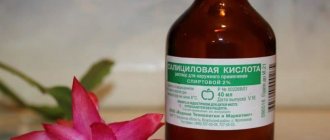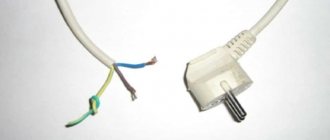In traumatology, a burn is understood as acute injury to the outer shells of the body by aggressive environments: high or low temperature, acid or alkali, solar or other wave radiation, etc.
Of all ophthalmic injuries, corneal burns occur in 15% of patients.
. Most of them are obtained in production, and only a third - in everyday life. By their specificity, they belong to the category of severe injuries requiring urgent assistance. In addition to the danger of irreversible changes in the tissue of the eyeball, burns are fraught with intense pain shock, which negatively affects the functions of vital organs.
Causes
The most common causes of burns to the outer shell of the eye, adjacent skin of the eyelids, tear ducts and glands, as well as deep-seated structures, are contacts with chemicals. Such an effect in ophthalmology refers to chemical burns of the cornea and is divided into several subtypes depending on what substance got on the cornea:
- Alkali burn. Occurs when a solution or dust of caustic soda, slaked lime or fluffed lime, a solution or vapor of ammonia, ethyl alcohol and drugs based on it, or household chlorine-based bleaches come into contact with the cornea. With this type of damage, liquefaction necrosis of the eye shell occurs, the area of which is much larger than the size of the contact spot: if a drop of the reagent gets on the eye, the burn itself will be 3-7 times larger than the diameter of this drop.
- Acid burn. Occurs when the membranes of the eye come into contact with vapors or solutions of vinegar, sulfuric or hydrochloric acid. This type of damage is accompanied by the formation of a scab - a focus of coagulative tissue necrosis, the boundaries of which rarely extend beyond the diameter of the contact spot.
- Thermal burn. It can occur when the eye comes into contact with hot liquid, hot steam, metal, grease, open flame, etc. In modern realities, thermal burns are often a consequence of improper use of electrical appliances, playing with firecrackers, etc. The nature of this type of damage is the same as as in contact with acids.
- Radiation burn. Occurs due to exposure of the cornea to ionizing, infrared or ultraviolet radiation. They are similar in nature to regular thermal burns, but can be deeper.
According to statistics, the basis of any corneal burn is non-compliance with standard safety measures when using household or professional chemicals or working with potentially hazardous objects.
Indications for the use of sea buckthorn oil for burns
Sea buckthorn extract should not be used immediately after an injury. It blocks the skin's ability to cool, resulting in even more pain. If the burn is not severe and there are no open wounds on the skin, then immediately after the injury you should rinse the affected area under running cold water. You need to keep it for at least 15 minutes to cool the skin.
Important! Do not apply ice or other cold objects to the affected area. Otherwise, you risk aggravating the condition by hypothermia.
Only after this, a medicinal product is used that helps prevent infection and reduce pain. Sea buckthorn oil can be used for 1st and 2nd degree burns. The remedy must be used in its pure form. It is applied to open areas of the skin using a cotton pad and a compress is made.
If a burn has formed in the throat, then use sea buckthorn oil internally. Before applying the traditional medicine, it is recommended to sterilize it in a water bath. Treat the injury with iodine, which does not dry out the skin, and then pour hydrogen peroxide on it to disinfect it.
Boiling water
Injury caused by boiling water or steam damages the deep layers of the skin. This is due not only to high temperatures, but also to evaporation. In this case, it is recommended to use sterile compresses.
Did you know? Sea buckthorn, along with Cinquefoil white, was used to treat victims after the Chernobyl nuclear power plant accident.
The procedure is as follows:
- Take a cotton pad. It needs to be disinfected with hydrogen peroxide.
- Drip a little sea buckthorn oil onto a cotton pad.
- Apply to the affected area of skin.
It is forbidden to secure the compress with a bandage, since air will not get inside the wound, which will promote rapid healing. It is best to use a sterile bandage. Change compresses every 4 hours. You will notice an improvement within 3-4 days.
Sunburn
Very often, sea buckthorn extract is used after prolonged exposure to the sun.
Using this tool the following effect is achieved:
- redness is eliminated;
- skin calms down;
- the skin is softened and moisturized.
It is recommended to use sea buckthorn oil for sunburn after taking a shower. Wipe the affected areas of the skin with a cotton pad, onto which you first apply the medicine. After 5–10 minutes. you will feel relieved. After 24 hours, redness, pain and swelling disappear. If the sunburn is severe, then you need to carefully apply a paper napkin, which is soaked in oil, to it.
Learn how to make your own sea buckthorn oil.
Chemical burns
Sea buckthorn oil is quite often used for chemical damage. Thanks to the large number of beneficial substances in its composition, scars and scars can be prevented. If your skin has been damaged by acids and alkalis, you need to carefully lubricate the area around the wounds. The duration of treatment depends on the severity of the burn. On average it lasts at least 10 days.
Facial burns
If thermal damage appears on the face, then you need to treat it with a cotton pad, which is soaked in sea buckthorn oil. The procedure must be carried out carefully so as not to harm the skin. Try to carry out all actions along massage lines.
Do not wash the product off your face. The skin will independently absorb as much medicine as it needs. If you need to apply it pointwise, you should use a cotton swab.
Varieties
The classification of thermal, radiation and chemical burns of the cornea of the eye divides the injury according to the degree of tissue damage, localization of the lesion and stage of the pathological process. In accordance with this, there are 4 degrees of burns of the cornea of the eye:
- Mild, or I degree
- superficial damage, accompanied by slight redness of the conjunctiva and skin of the eyelids, slight erosion of the surface of the cornea, which is noticeable only after treating the eye with fluorescein. Does not require intensive therapy; as it heals, it disappears without a trace. Does not threaten vision loss.
- Average, or II degree
- is expressed by superficial necrosis of the mucous membranes of the eye and conjunctiva, their swelling, damage to the stroma and epithelial layer of the cornea. Grayish-turbid lesions on the surface of the eye and blisters on the skin of the eyelids are visually recorded. With this degree of damage, scarring is likely to form on the surface of the cornea, which leads to a partial decrease in visual acuity. - Severe, or grade III
, necrotic changes are observed throughout the conjunctiva and its underlying layers, including the sclera and cartilage of the eyelids. Its surface acquires a grayish-yellow color and a matte texture. With such a degree of burn, the cornea loses its transparency and dries out. Changes are observed on 50% or less of the surface of the eyeball. After the scab is rejected, scar defects form on the cornea, which significantly reduce visual acuity. - Particularly severe, or grade IV
, is the deepest necrosis with charring of the conjunctiva and sclera of the eye. With this degree of damage, the cornea becomes completely opaque, holes appear on it, and the internal structures of the eye also undergo changes. With this degree, the likelihood of complete loss of vision is very high.
Based on the localization and extent of the process, three types of corneal burns are distinguished:
- with damage to the conjunctival sac;
- with destruction of the eyeball;
- damage to the adnexal structures of the eye.
Depending on the stage of the pathological process, eye burns are divided into:
- early
- lasts up to 2 days and is accompanied by an increase in necrobiosis, that is, the spread of tissue necrosis due to the breakdown of proteins and polysaccharides; - medium
- lasts up to 3 weeks, accompanied by a violation of tissue trophism; - late
- last up to 3 months and are accompanied by multiple trophic disorders with a lack of oxygen in the cornea, however, against this background, restoration of nutrition of the cornea is planned; - scarring
- lasts from six months to several years, accompanied by increased synthesis of collagen and protein, restoration of corneal functions.
Important! The most favorable prognosis is for mild superficial injuries. Full restoration of visual acuity after them occurs after 12-24 months. Severe damage often results in permanent vision loss.
Composition and features of therapeutic effects
The way sea buckthorn oil behaves on burns can be explained by the rich chemical composition of the berry itself. Sea buckthorn contains many vitamins necessary for humans. Vitamin C is found in the highest concentration here - it ensures the regulation of the protective functions of the skin and restoration of its elasticity and moisture after exposure to sunlight.
In addition, the plant contains vitamins E, A, P, K and group B, potassium, magnesium, calcium and iron. All this together provides unique characteristics of sea buckthorn oil for burns, its effect on skin damaged as a result of exposure to fire, hot water or steam.
Sea buckthorn oil helps against burns because it has the following qualities:
- Analgesic - relieves pain.
- Antibacterial – suppresses the activity of pathogenic organisms on burned areas of the skin.
- Anti-inflammatory – provides protection to damaged skin areas from inflammation and aggravation of the severity of the consequences of a burn.
- Regenerating – restores damaged tissues (at the cellular level), activating vital processes in them.
The natural product helps cleanse damaged areas of the skin from the accumulation of pus, improves blood circulation in tissues, protects the skin from UV radiation, and strengthens vascular walls. When using it, one can expect a fairly rapid recovery of all types of cells, which entails the absence of visible consequences of high temperature exposure.
By the way!
In medical circles, it is generally accepted that oils and substances based on them should not be used to treat burns to the skin; sea buckthorn oil is an exception to the general rule.
Indeed, like other natural oils, it cannot be applied to the skin immediately after thermal exposure, so as not to disrupt heat exchange in the tissues. But, following some rules and taking into account the unique composition of sea buckthorn oil, it can heal burn wounds of various origins quite effectively and in a short period of time.
Symptoms
Clinically, a corneal burn always manifests itself clearly and unambiguously: even without special knowledge, it is difficult to mistake it for another injury. The most striking symptoms of chemical and thermal burns are:
- acute, almost unbearable pain localized in the damaged eye and eyelid;
- reflex closure of the eyelids, photophobia;
- intense lacrimation (if the tear ducts are damaged, the sign may be absent);
- hyperemia of the skin, mucous membranes, conjunctiva;
- clouding of the cornea (noticeable with a severe burn).
Radiation damage may not be accompanied by unpleasant symptoms immediately after receiving it. Burning sensation, lacrimation, photophobia, hyperemia and photophobia appear after a few hours.
Sea buckthorn oil for burns in children
Sea buckthorn extract is a hypoallergenic product. Therefore, some doctors prescribe it to treat burns in children. You can use the medicine from the first days of a child’s life. First, you need to apply a damp diaper to the affected area to cool it. After this, apply a small amount of oil.
Important! In case of severe burns, the child should be seen by a doctor. In addition to traditional medicine, medications will also be prescribed.
First aid
According to statistics, the degree and depth of damage to the cornea is influenced not by the type of traumatic impact, but by the duration of its contact with the surface of the eye. That is why everyone, without exception, needs to know basic first aid measures.
Important! A quick and correct reaction is especially important in cases where there is a thermal or chemical burn to the cornea of the eye.
What needs to be done to stop or reduce the influence of traumatic factors
:
- rinse the eye with a stream of cool, clean water, preferably saline, but regular tap water will do;
- remove foreign bodies from the surface of the eye, especially if they are hot metal particles (molten polymers should not be touched);
- Place a gel or ointment with an analgesic effect in the conjunctival sac to relieve pain and prevent the development of shock.
In the first hours after the patient’s admission to the hospital, doctors must rinse the lacrimal canals and remove foreign bodies embedded in the membrane of the eye. To prevent infection, chemically neutral antiseptic solutions are used to wash the eye.
Important! It is strictly forbidden to wash off chemical reagents from the surface of the eye with other chemicals, for example, acids and alkalis and vice versa, as this can lead to additional damage. Experts note that treating a combined corneal burn is many times more difficult than a specific type of burn.
What can you do at home?
Considering that not everyone has the opportunity to purchase expensive pharmaceutical drugs, you can use home remedies to help with a burn from boiling water. However, such products, even if they are used to treat 1st degree burns, do not act as effectively and quickly as ointments and sprays intended for this purpose, and treatment of more serious lesions should be carried out exclusively with specialized products under the supervision of a physician.
One of these products used to provide first aid for a household burn on a small area of the body is household burn plasters from HARTMANN.
Treatment
Intensive treatment of any type of burn of the cornea begins immediately after the patient enters a medical facility. To begin with, instillation of scopolamine and atropine directly into the eye is prescribed. These drugs relieve pain and reduce the formation of adhesions between the cornea and conjunctiva.
On the first day, the process of tissue change under the influence of traumatic factors continues. It is impossible to stop it completely, so doctors will have to wait until the necrotic processes stabilize. At this stage, it is important to prevent infection of the eyeball and reduce the intensity of symptoms. For this use:
- ointments and drops
with tetracycline, ciprofloxacin or chloramphenicol; - local non-steroidal anti-inflammatory drugs
- Diclofenac or Ibuprofen; - substitutes for tear fluid
to prevent drying of the cornea.
After stabilization of the condition, rehabilitation treatment begins. In the absence of perforations of the membranes of the eye, conservative methods are limited:
- injections of antioxidant drugs (methylethylpyridinol);
- placing gel-like regenerating preparations (Solcoseryl or Deskpanthenol) behind the eyelid;
- instillation of antihypertensive solutions (Betaxolol or Dorzolamide) into the eyes.
If the corneal burn is deep, hormonal agents are prescribed, most often glucocorticoids in the form of solutions for injection into the eyeball or conjunctiva.
Surgical intervention is used for deep and widespread damage to the membranes and internal structures of the eye.
If the anterior chamber of the eye is affected, corneal paracentesis is performed, followed by chamber sanitation. In case of deep damage to the eyeball, the dead areas of the conjunctiva, cornea, and vitreous body are removed, after which plastic restoration of the removed tissue is carried out.
In the long-term period, patients may require plastic restoration of the eyelids: elimination of eversion and entropion, ptosis, trichiasis, correction of post-burn cataracts, lamellar keratoplasty, etc.
Side effects and contraindications
The ointment has not only benefits, but also a number of contraindications.
- It is prohibited to use the product in the following cases:
- individual intolerance of the body;
- allergy;
- pancreatic diseases;
- pregnancy in the first trimester;
- liver and gallbladder diseases.
If you use sea buckthorn extract externally, you may experience side effects such as burning and irritation. In cases where you experience severe discomfort, it is necessary to stop treatment with folk remedies.
Now you know how to properly use sea buckthorn oil for various burns. You can buy this product at any pharmacy at an affordable price or prepare it at home. It is necessary to use the substance only after a medical examination, so as not to worsen the condition of the skin.
Is it possible to smear?
Many people are interested in whether this product helps in healing burns. The answer is definitely positive, since burns were treated with sea buckthorn oil hundreds of years ago. However, it should be noted that resorting to this method of treatment is only worthwhile for mild forms of burns, since for more complex forms it is impossible to do without drug treatment.











